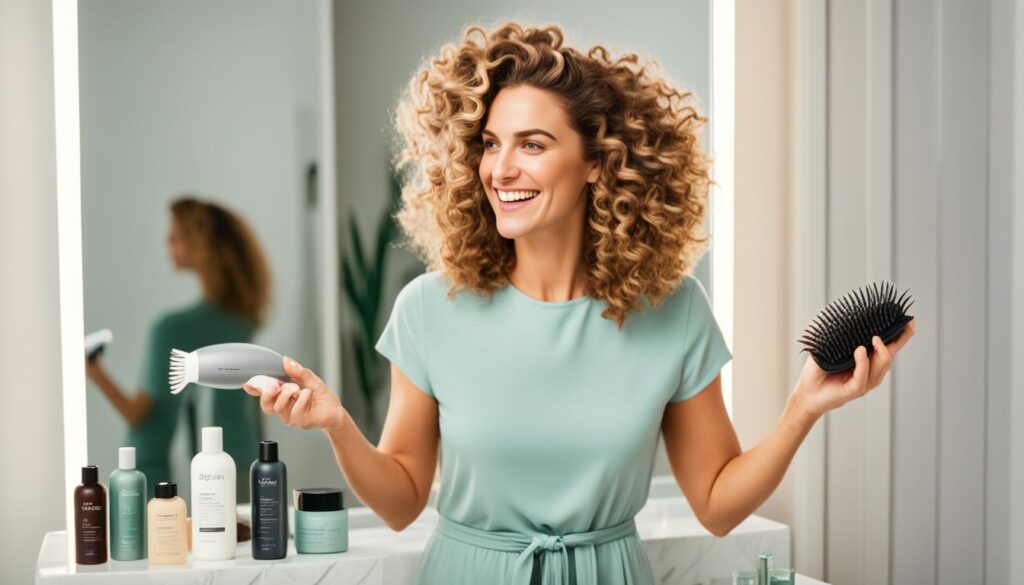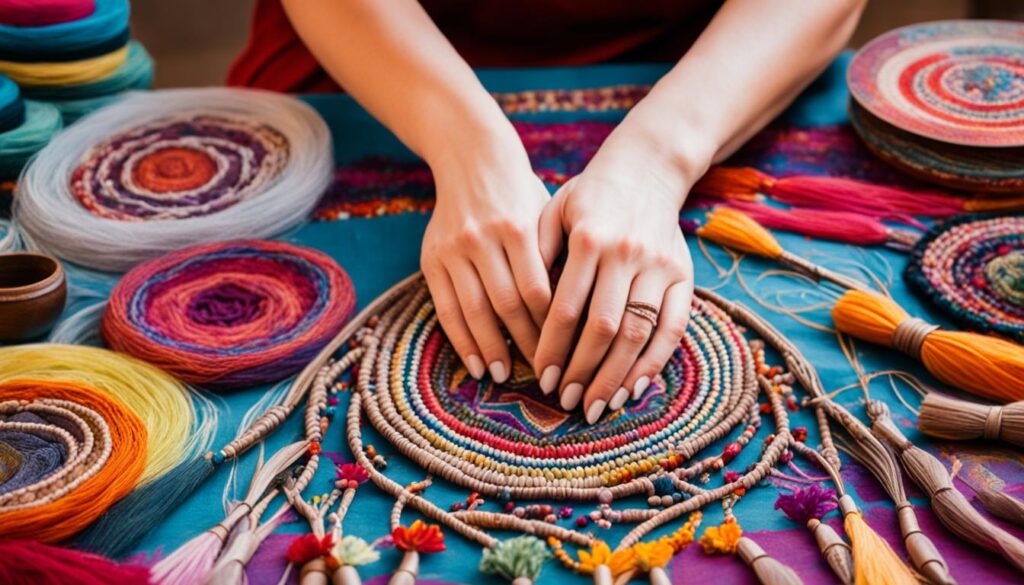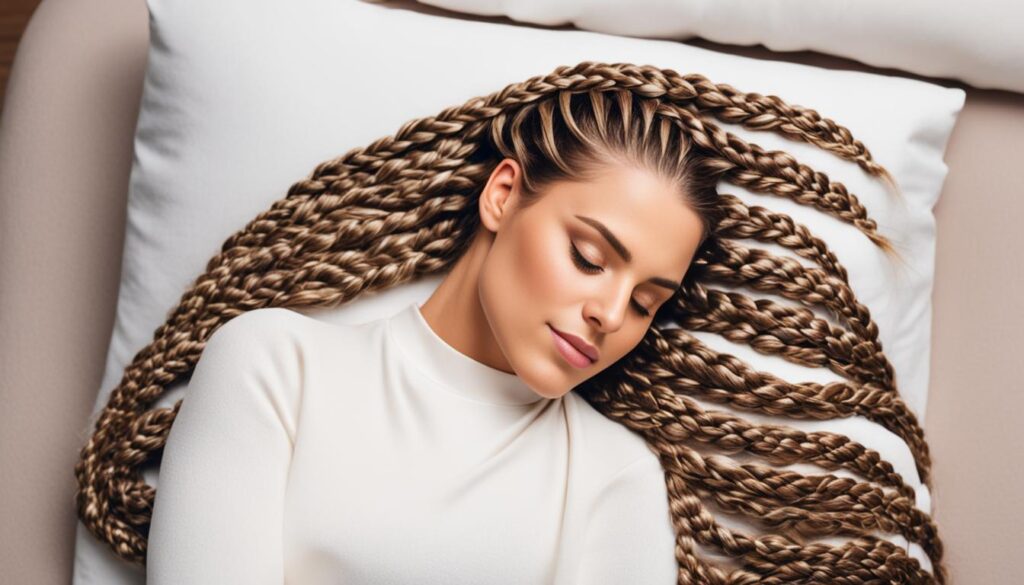
Many people have heard that sleeping in braids can promote hair growth, but is there any truth to this popular belief? Is it just a myth, or can braiding your hair overnight actually benefit your hair’s health and help it grow longer? Let’s explore the relationship between sleeping in braids and hair growth to determine whether this hair care practice is worth incorporating into your routine.
Sleeping in braids can have several benefits for your hair. By braiding your hair at night, you can prevent tangling and knotting, reducing the risk of hair breakage. Additionally, braiding helps maintain hair hydration and locks in moisture, resulting in softer and shinier hair. While braiding itself does not directly promote hair growth, it creates a healthy environment for your hair to thrive. By preventing breakage and retaining moisture, braids allow your hair to grow longer and stronger.
But how exactly do braids contribute to hair growth? Is there a specific way to braid your hair for maximum benefits? And are there any precautions you should take when sleeping in braids? In this article, we will delve into the science behind braids and hair growth, exploring the dos and don’ts of braiding your hair, and uncovering the secrets to healthy, luscious locks.
Key Takeaways:
- Sleeping in braids can help prevent tangling, knotting, and hair breakage.
- Braiding your hair at night helps maintain hair hydration and locks in moisture.
- Braiding creates a healthy environment for hair growth by preventing breakage and retaining moisture.
- Proper braiding techniques and hair care practices are crucial for maximizing the benefits of sleeping in braids.
- Braiding your hair can also be a stylish way to achieve waves and keep hair out of your face while sleeping.
6 Benefits of Braiding Hair at Night
Braiding the hair at night can have multiple benefits for hair health and appearance. Discover the advantages of sleeping in braids and wake up to beautiful, manageable hair.
1. Preventing Tangling and Knotting
Sleeping with loose hair can lead to tangles and knots, causing frustration during morning grooming routines. By braiding the hair before bed, you can prevent tangling and make it easier to comb or style your hair in the morning.
2. Reducing Hair Breakage
Braids act as a protective barrier against friction caused by contact with the pillowcase. This reduces hair breakage from rubbing and tangling, helping to maintain the integrity of your hair strands.
3. Maintaining Hair Hydration
Braids help lock in moisture, preventing excessive evaporation and keeping your hair hydrated throughout the night. This helps to retain hair moisture, resulting in softer and shinier hair when you wake up.
4. Promoting Hair Growth
While braiding hair itself doesn’t directly promote hair growth, it creates an optimal environment for healthy hair growth. By preventing breakage and retaining moisture, braids allow your hair to grow longer and stronger.
5. Easy Styling
Sleeping in braids provides an effortless way to achieve natural waves without the use of heat styling tools. In the morning, you can release the braids and enjoy beautifully textured hair that requires minimal styling.
6. Keeping Hair Out of the Face
Braiding hair at night keeps it neatly in place, preventing it from falling onto your face while you sleep. This can help reduce the risk of acne breakouts and keep your skin clear and healthy.
Experience the benefits of sleeping in braids and discover how this simple nighttime ritual can enhance the health and appearance of your hair.
Do’s and Don’ts of Braiding Hair
To get the most out of braiding the hair at night, it is essential to follow some do’s and don’ts. These tips for braiding hair will help ensure that your braids are not only stylish but also promote healthy hair growth and minimize damage.
Do’s:
- Start with detangled hair: Before braiding, make sure your hair is free from tangles and knots. Use a wide-tooth comb or detangling brush to gently remove any knots and ensure smooth braiding.
- Use a nourishing hair product: Apply a nourishing hair product, such as a leave-in conditioner or light hair oil, before braiding. This will help keep your hair moisturized and manageable throughout the night.
- Braid gently: When braiding your hair, be gentle and avoid pulling too hard on the strands. Pulling too tightly can lead to hair breakage and scalp pain.
- Secure with a soft hair tie: Use a soft hair tie or scrunchie to secure your braids. Avoid using tight elastics or rubber bands, as they can cause hair breakage and damage.
- Try different braiding styles: Experiment with different braiding styles, such as French braids, Dutch braids, fishtail braids, or box braids. Trying different styles can help you find the best one for your hair type and length.
- Protect braids at night: To protect your braids while you sleep, use a silk bonnet, silk scarf, or silk/satin pillowcase. These materials reduce friction and help maintain the integrity of your braids.
Don’ts:
- Avoid braiding wet hair: Wet hair is more vulnerable to damage and breakage. Make sure your hair is dry before braiding.
- Don’t over-tighten: Over-tightening your braids can put stress on your hair and scalp, leading to hair loss and traction alopecia. Make sure your braids are secure but not overly tight.
- Don’t leave braids in too long: Leaving braids in for too long can result in tangling and matting of the hair. It is recommended to take down your braids after a few weeks to prevent damage.
- Don’t use the same style continuously: Using the same braid style continuously can strain specific areas of the hair, leading to breakage. Switch up your braid styles to distribute the tension evenly.
- Don’t neglect hair health: While braiding can be a protective style, it’s important not to neglect overall hair health. Maintain a healthy hair care routine, including regular washing, conditioning, and moisturizing.
- Don’t ignore scalp care: A healthy scalp is essential for healthy hair growth. Take care of your scalp by keeping it clean, moisturized, and free from product buildup.
By following these do’s and don’ts of braiding hair, you can ensure that your braids not only look great but also promote healthy hair growth and minimize damage.

The Ritual of Braiding Hair in Indian Culture
Braiding hair holds significant importance in Indian culture. Mothers often practice the tradition of braiding their daughters’ hair before they go to school or sleep. This age-old ritual showcases the value and deep-rooted significance attached to braiding in Indian culture.
Braiding serves as a means of protecting and caring for the hair strands. It is believed to prevent breakage, tangles, and knots, ensuring the hair remains healthy and intact. Additionally, braided hairstyles help in locking in moisture, promoting well-nourished and lustrous hair.
In Indian households, the act of braiding one’s daughter’s hair is more than just a practical grooming routine. It is a symbolic and traditional bonding time between mothers and daughters. During this special time, mothers often incorporate rituals such as combing and massaging the scalp, fostering a sense of connection and nurturing relationships.
As part of the braiding tradition, mothers may also choose to wrap a ribbon or tie a hair accessory around the braid to provide extra protection and enhance the aesthetic appeal of the hairstyle.
The ritual of braiding hair in Indian culture not only ensures hair health and protection but also fosters a sense of heritage and cultural identity. It is a cherished practice that has been passed down through generations, emphasizing the importance of familial bonds and traditional customs.

Through the art of braiding, Indian women pass on their knowledge of haircare and the significance of preserving traditions. It is a beautiful way to celebrate the rich cultural heritage associated with hair and bonding between mothers and daughters.
The Benefits of Braiding Hair for Hair Growth
While braiding hair does not directly speed up the growth rate, it offers benefits that indirectly support hair growth.
Braids provide a strong structure for the hair, reducing hair breakage and preventing damage. By keeping the hair in braids, especially loose ones, hair breakage from tossing and turning during sleep can be prevented. This protection allows the hair to grow without additional damage.
Braids also minimize the contact of the hair with fabrics, skin, and other factors that can cause frictional hair breakage. This reduces the friction that can lead to hair breakage and ensures the delicate hair strands are protected. By reducing frictional hair breakage, braids create a more favorable environment for hair growth.
However, it is important to strike a balance when braiding hair. Tight braids can cause breakage and lead to a form of hair loss called traction alopecia. So, it is crucial to avoid excessive tension on the hair and scalp while braiding, ensuring that the braids are secure but not too tight.
By incorporating protective braiding techniques, individuals can prevent hair breakage, reduce frictional hair breakage, and protect their delicate hair, ultimately creating conditions favorable for hair growth.
Braided Hairstyles for Tangle-Free Hair
When it comes to preventing hair breakage and reducing tangles, incorporating different braided hairstyles can work wonders. Not only do they keep the hair structured, but they also minimize snarls and tangles, promoting healthier-looking hair. Let’s explore some popular and effective braided hairstyles that can help prevent hair breakage and reduce tangles.
1. Simple Braided Pigtails

Simple braided pigtails are an easy and stylish option for achieving tangle-free hair. By dividing the hair into two sections and braiding each section, you can create a neat and structured style. This hairstyle keeps the hair in place and helps prevent tangling and knotting, reducing the risks of hair breakage.
2. Wrapping Braids Around the Crown
For a more formal look that provides added protection against hair breakage from brushing, consider wrapping braids around the crown of your head. This elegant style not only keeps the hair away from the face but also ensures minimal frictional breakage. By braiding sections of hair and wrapping them around the head, you can achieve a sophisticated yet protective hairstyle.
3. French Braids
French braids are a classic and versatile style that offers numerous benefits for preventing hair breakage. These braids distribute the tension more evenly by adding small pieces of hair while braiding, resulting in reduced breakage. Additionally, French braids keep the hair tamed, minimize tangles, and prevent frictional breakage, making them an excellent choice for achieving healthier-looking hair.
By incorporating these braided hairstyles into your daily routine, you can keep your hair tangle-free and reduce the risk of hair breakage. Experiment with different styles and find the one that suits your preferences and hair type best.
Conclusion
Sleeping in braids can provide numerous benefits for hair growth and overall hair health. While braiding alone does not directly stimulate hair growth, it plays a crucial role in creating an optimal environment for healthy hair. Braids help prevent tangling and knotting, reducing the risk of hair breakage. By securing the hair in braids, moisture is retained, resulting in softer and shinier hair. Additionally, braiding allows for easy styling and keeps the hair away from the face, minimizing the occurrence of acne breakouts.
To fully reap the benefits of sleeping in braids, it is important to follow proper braiding techniques and maintain hair and scalp health. Starting with detangled hair and using a nourishing hair product can enhance the effectiveness of braiding. It is crucial to braid gently, avoiding excessive tension to prevent hair and scalp damage. Protecting the braids at night with a silk bonnet, scarf, or pillowcase can minimize friction against the hair, reducing breakage. It is also important to strike a balance between protective braiding and avoiding over-tightening, as excessive tension can lead to traction alopecia.
Incorporating braiding into a regular hair care routine can contribute to overall hair health and promote longer, healthier-looking hair. While braiding alone may not directly speed up hair growth, its protective nature prevents damage and breakage, allowing the hair to grow longer and stronger over time. By maintaining hair hydration and preventing breakage, sleeping in braids can play a crucial role in achieving and maintaining optimal hair health.






